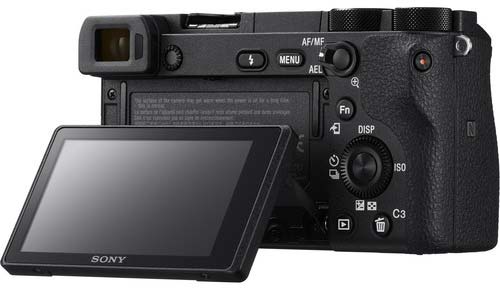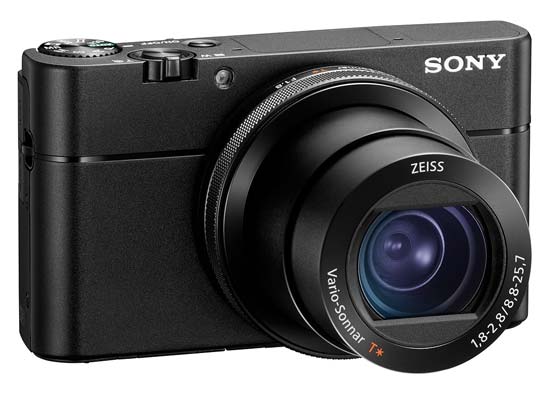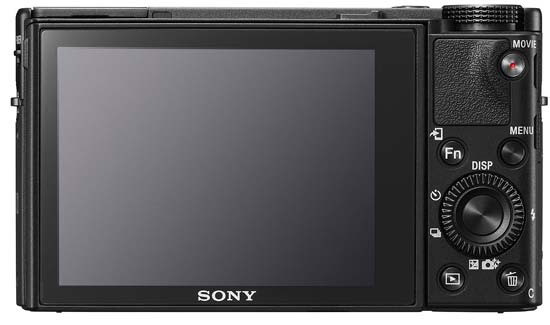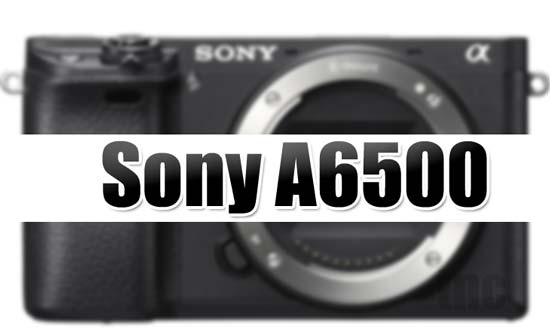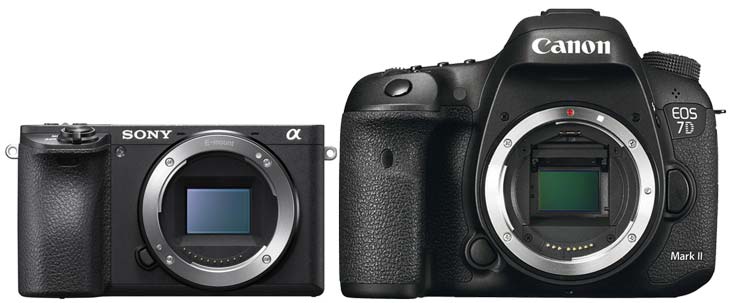
Sony A6500 vs Canon 7D Mark II – We have no doubt on Canon 7D Mark II DSLR performance, it is one of the best DSLRs ever manufactured by Canon. But What will happen when we will compare class leading DSLR with flagship mirrorless camera ? Let’s find out.
Features/ Models |
Sony A6500 |
Canon 7D Mark II |
| Megapixel | 24 megapixels | 20.2MP APS-C CMOS Sensor |
| Sensor size | APS-C (23.5 x 15.7 mm) | APS-C – 22.5 x 15 mm |
| Low pass filter | Yes | Yes |
| Image processor | Bionz X | Dual DIGIC 6 Image Processors |
| Image Stabilization | Yes – 5 Axis Image Stabilization | No |
| AF system | Phase Detection: 425 Contrast Detection: 169 |
65-Point All Cross-Type Phase-Detect AF |
| AF | Hybrid | Hybrid |
| ISO | 100-51200 | 100-16000 Standard and 100-51200 Expandable |
| Shutter Min/ mix | 30 – 1/4000 | Shutter 30 seconds -1/8000 |
| Continuous shooting speed | Up to 11 fps at 24.2 MP for up to 301 frames in JPEG format / 107 frames in raw format |
10fps |
| Video | 4K @ 30 fps | Full HD 60fps |
| Display | 3.0″ 921.6k-Dot Tilting Touchscreen LCD | 3.0″ 1.04m-Dot Clear View II LCD Monitor |
| Viewfinder | Yes | Optical |
| Hot shoe | Built-In | Yes |
| Wireless | Yes | Wi-Fi, NFC. Remote shooting |
| Environmentally sealed | yes | Yes |
| Battery life | 350 Shots | 670 |
| Dimensions | 120 x 67 x 53 mm | 149 x 112 x 78 mm |
| Weight | 453 g | 910g |
Canon 7D Mark II camera features 20 Megapixel CMOS sensor and Sony A6500 camera feature 24 MP sensor. ISO range of both the camera is same.The camera sensor size of the Sony A6500 is little big compared Canon 7D Mark II. We all know that the Sony A6500 camera does have the same sensor as of A6300 but due to thin copper wiring, enhanced circuit processing, and an enhanced front-end LSI we may see major improvement in image quality of the camera.
Sony A6500 camera features built-in image stabilization system to compensate camera shake upto 5 stops the other big advantage you get that OSS based lenses Image stabilization system will get synchronized with the in Body IS of A6500. No Built-in IS available inside the Canon 7D Mark II camera.
But the most important thing is both the camera is designed on different technological background, the Canon 7D Mark II camera features Dual-pixel CMOS AF sensor whereas the Sony A6500 camera uses Hybrid CMOS AF sensor. With the Hybrid AF system the camera Sony A6500 camera offers 425 Phase AF points and 169 Contrast based AF points. So you get a entire display covered with dense AF that will track and lock AF in no time. Sony A6500 AF system is more advance compared to Canon 7D Mark II.
The continuous shooting speed of the Sony A6500 camera is superior. The A6500 Can shoot 11frames per second @ 24 MP whereas Canon 7D Mark can shoot 10 frames per second @ 20MP. The large buffer inside the Sony A6500 can intake 301+shots of JPEG files in single burst mode and 107 RAW frames.
Sony A6500 captures 4K video mode whereas the Canon 7D Mark II limited to Full HD video mode only. The A6500 2.4x oversampling renders greater detail and full pixel readout is possible and there is no pixel binning. Sony A6500 Full HD 1080p recording can be done @ 120 fps whereas Full HD Video recording of the 7D Mk II camera remains limited to 60fps only.
On the rear side of A6500 we have touch screen that allow user to capture images just tapping. The other major advantage is we can use the display screen as touch-pad to select AF point while we are looking through the viewfinder.
Canon 7D Mark II features twice battery life compared to Sony A6500.
The weight and Size of the Canon is twice as of Sony, So if you prefer light-weight camera or you work continuously for hours than Sony A6500 is best for you.
Sony A6500 vs Canon 7D Mark II – Sensor Test
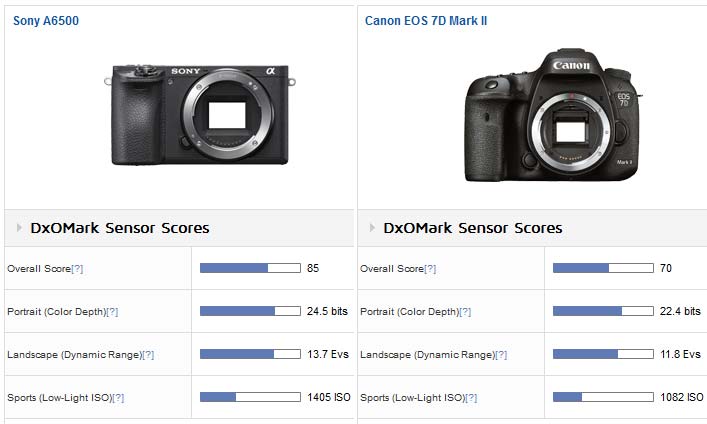
From the sensor test conduct by the DXO Mark Lab it’s very clear that despite of having same ISO range on paper the DXO given a better low-light score compared to Canon 7D Mark II.
From the test score we concluded that
- The Sony A6500 Showing better portrait color depth
- Sony A6500 showing better dynamic range then the 7D Mk II
- Low light score of the Sony A6500 is also good when compared to 7D MK II
Now Finally time for some real test – We are comparing High ISO Test images against Each other
Sony A6500 vs Canon 7D Mark II – High ISO Test

@ ISO 6400
On the left side we have Sony A6500 and on the right side we have Canon 7D Mark II camera.
Both camera set at ISO 6400 setting and we are surprised to see that Sony A6500 is able to grab bit more details compared to the Canon 7D Mark II camera. The other reason behind the better perofmrance of Sony A6500 is 24 MP sensor whereas the Canon 7D Mark II camera features a 20 MP sensor .
Verdict
Sony A6500 does offer superior specification compared to Canon 7D Mark II camera. You get more resolution with big bigger sensor, 5-axis image stabilization and Advance Hybrid AF mode. The continuous shooting mode of the A6500 is better as well as you also get touch screen for more convince. We recommend Sony A6500 over Canon 7D Mark II camera.
Buy Sony A6500 from B&H Store | Amazon

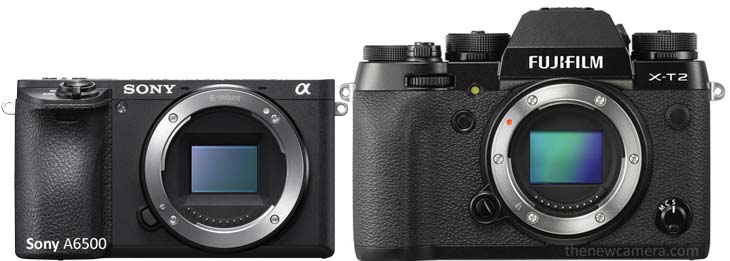 Yes the core specification of the Sony A6500 camera will give a tough competition to Fuji X-T2 without a doubt. The Sony A6500 will cost you less compared to the X-T2. In the specification comparison review of Sony A6500 vs Fuji X-T2 we have outlined the major difference between, just take a look
Yes the core specification of the Sony A6500 camera will give a tough competition to Fuji X-T2 without a doubt. The Sony A6500 will cost you less compared to the X-T2. In the specification comparison review of Sony A6500 vs Fuji X-T2 we have outlined the major difference between, just take a look
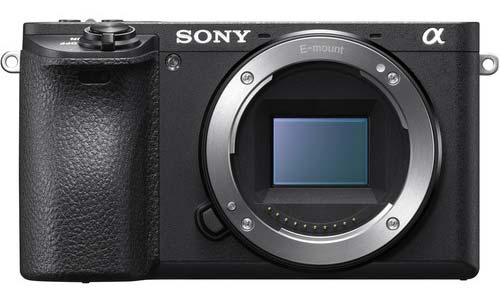 Pre-order Sony A6500 from
Pre-order Sony A6500 from 